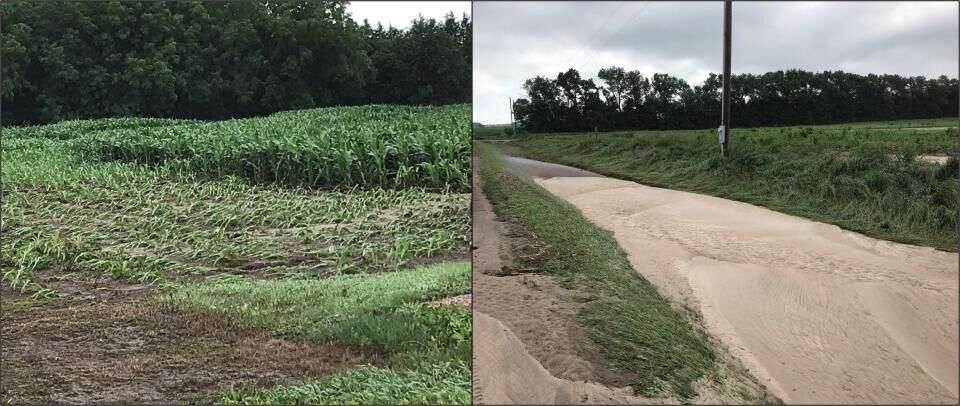Some crop growers have always removed crop residue for animal feed and bedding. Many corn fields have been baled as this year. Some of the fields look like almost every bit of residue has been removed from them and left bare. Crop residue removal should be done in such a way that it benefits the grower without negatively impacting the health and productivity of the soil as well as the environment.
Crop residues play several important roles including:
-
Protection from erosion;
-
Providing nutrients;
-
Improving water availability; and
-
Providing shelter for wildlife and microbiology.
Crop residues protect soil
One of those roles is protecting the soil from wind and water erosion. Removing crop residue exposes the soil surface to erosive forces increasing the risk of soil erosion. Most people think of water erosion, but wind erosion can be just as detrimental. This is especially true for regions with rolling hills and intense and regular wind, both of which are factors affecting soil erosion.
Growers can contact local Natural Resources Conservation Service offices to help them with using tools such as RUSLE2 (Revised Universal Soil Loss Equation, version 2) and WEPS (Wind Erosion Prediction System) to develop a soil conservation plan for residue removal program that leaves enough residue on the soil to reduce soil loss to a tolerable level.
Soil erosion has negative economic impact both on-site and off-site. At a farm level, impact is directly related to loss of organic matter and nutrient rich topsoil. A University of Wisconsin-Madison study indicated that eroded soil material contained 2.1 times as much organic matter, 2.7 times as much nitrogen, 3.4 times as much available phosphorus and 19.3 times as much exchangeable potassium as the bulk soil (Massey and Jackson, 1952).
The moment this nutrient rich valuable soil is carried off the farm by runoff water, it will become a problem to society at large by polluting its drinking and recreational water, by filling drainage ditches and dams with sediments causing localized flooding. Governments at local, state, and federal level have to spend taxpayers’ money to clean the water and remove sediments. A 1995 study estimated the off-site cost associated with soil erosion to be 17 billion USD per year (Pimentel et al., 1995).
To read more, visit UNL Water.




